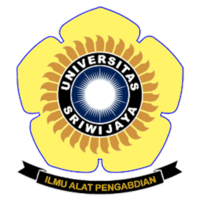Penghambatan Perkecambahan Akibat Aplikasi Ekstrak dari Tanaman Utama dan Ratun Sorgum (Sorghum bicolor L.) yang Diproduksi di Lahan Rawa
Abstract
Susilo E, Setyowati N, Nurjannah U, Riwandi, Muktamar Z. 2021. Inhibition of germination due to application of extracts from main plants and ratoon sorghum (Sorghum bicolor L.) produced in swamplands. In: Herlinda S et al. (Eds.), Prosiding Seminar Nasional Lahan Suboptimal ke-9 Tahun 2021, Palembang 20 Oktober 2021. pp. 426-434. Palembang: Penerbit & Percetakan Universitas Sriwijaya (UNSRI).
Sorghum is one of the plants that produces allelopathic chemicals with bioherbicide potential. Water extract can be used to suppress weeds around planted plants. The water extract material's source has the potential to be used as a variety of bioherbicides. The goal of the study was to see if water extract of sorghum obtained from the main plant and ratoon growing in swampland with different test plants could hinder germination. A randomized block design was adopted in this investigation. The first factor is the extract's source, which is made up of the primary plant and ratoon. The second component was the test plants, which were Numbu and Suri 3 types. Experiments on Petri dishes used the bioassay method. Each petri dish received 10 mL of aqueous extract, 25 sorghum seeds, and was cultured for five days. The main plant had the largest germination inhibition, as evidenced by normal germination (33.78%), shorter radicle length (5.55 cm), and a higher number of non-growing seeds (47.12%). Furthermore, the Suri 3 variety had the maximum germination inhibition, with normal sprouts (34.65%), radicle length (5.10 cm), sprout wet weight (0.118 g), and radicle dry weight (0.118 g) in the test plant (0.0012 g). low, and seeds did not develop any faster (43.57 percent). These data suggest that the most allelopathic chemicals are produced by sorghum extract taken from the primary plant. Furthermore, the maximum inhibition was achieved using sorghum extract from the Numbu variety in combination with the Suri 3 test plant. As a result, the primary crop has the greatest potential as a bioherbicide source.
Keywords
Full Text:
PDFArticle Metrics
Abstract view : 298 timesPDF - 574 times
Refbacks
- There are currently no refbacks.

